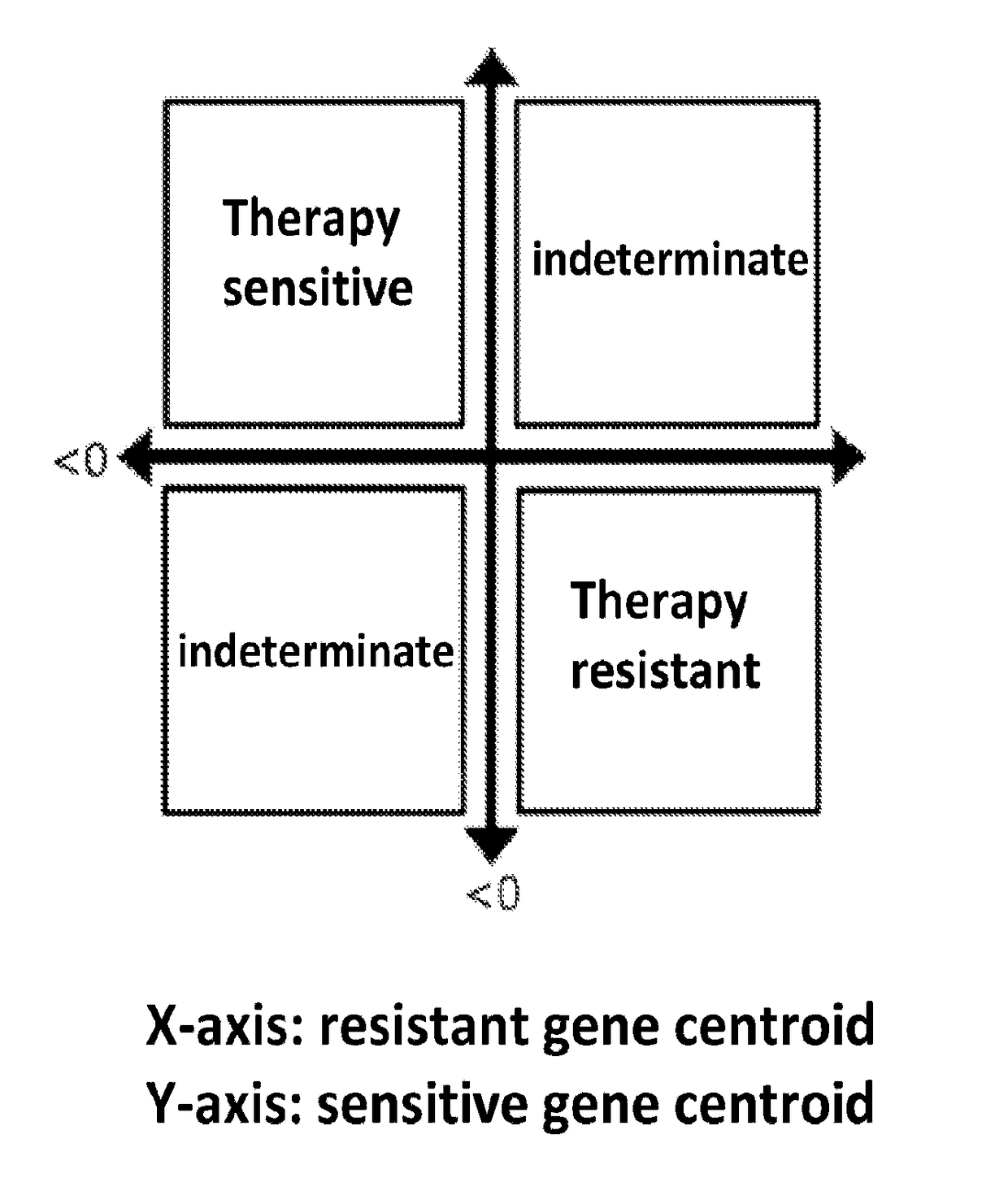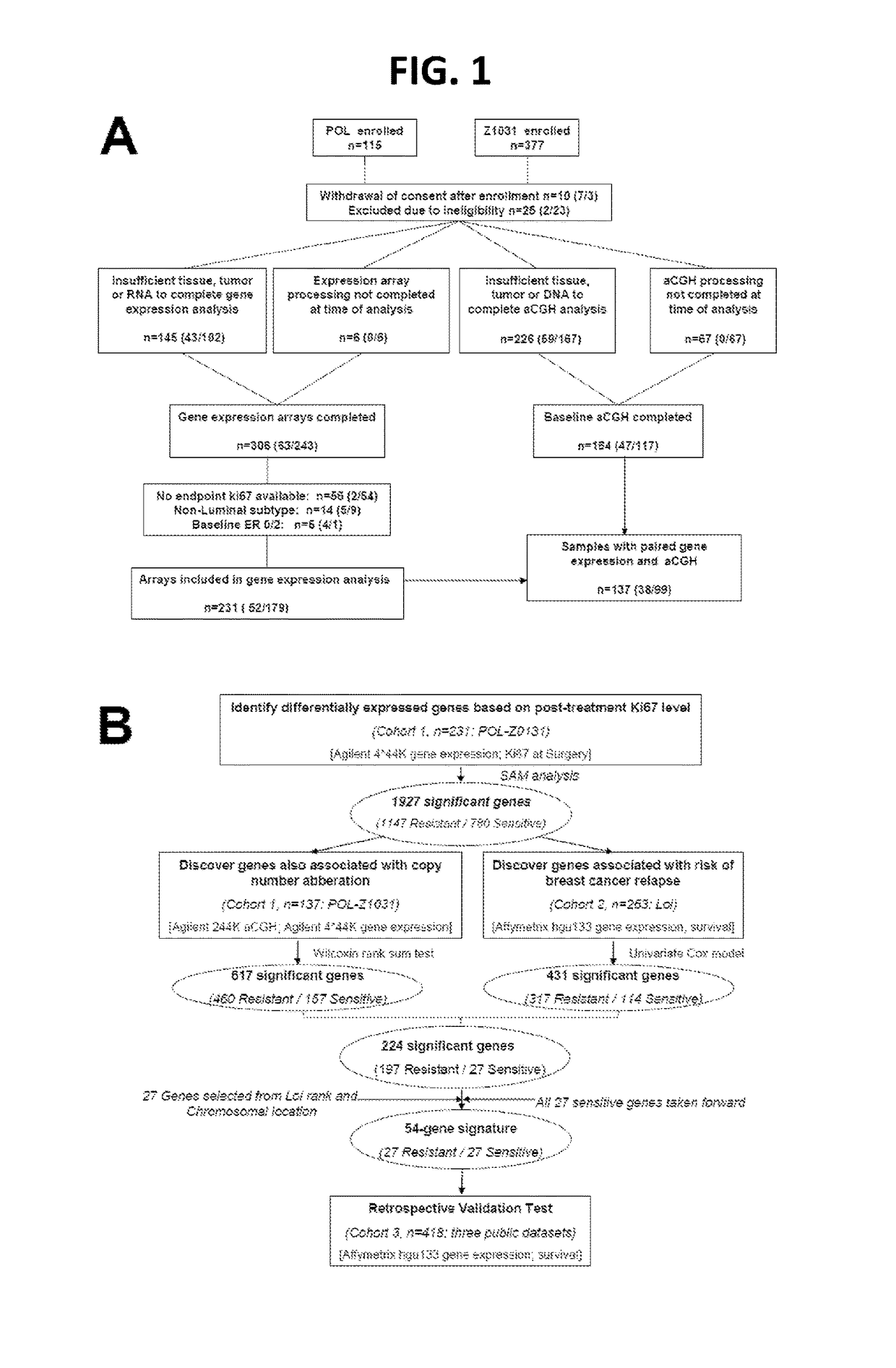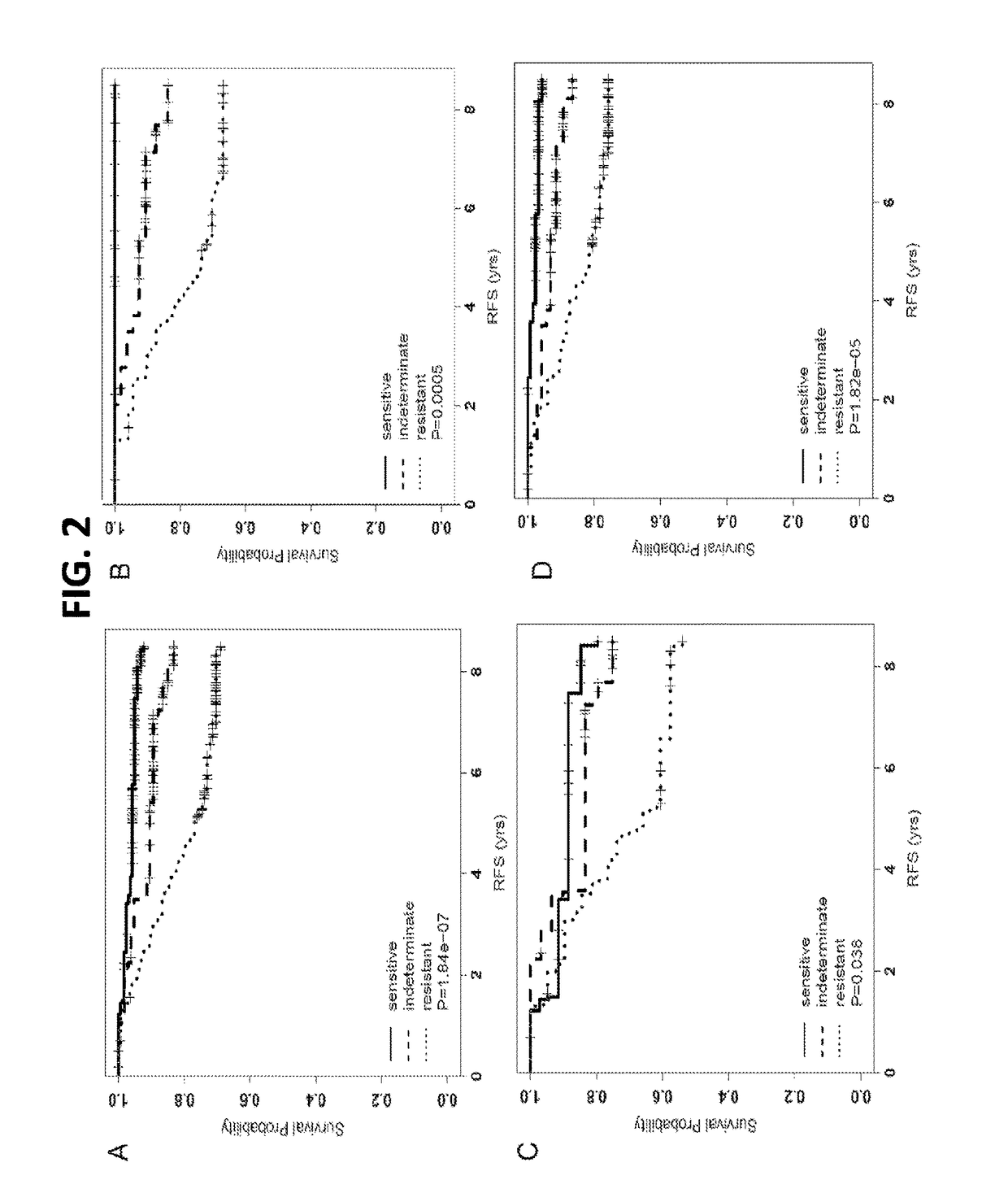Copy number aberration driven endocrine response gene signature
a technology of endocrine response and gene signature, which is applied in the field of breast cancer, can solve the problems of inability to make confident clinical decisions, limited in their ability to predict the risk of relapse, and genes in these signatures are not amplicon-driven, and achieve the effect of superior assay performan
- Summary
- Abstract
- Description
- Claims
- Application Information
AI Technical Summary
Benefits of technology
Problems solved by technology
Method used
Image
Examples
example 1
[0076]This example illustrates the identification of Endocrine Response Modifier Genes (ERMG).
[0077]Study samples to identify ERMG were used from previously described neoadjuvant endocrine therapy studies, preoperative letrozole Phase 2 (POL) trial and ACOSOG Z1031 neoadjuvant aromatase inhibitor (AI) trial (Van Tine, B. A., et al. 2011; Olson, J.A., Jr., et al. 2009). A 10% Ki67 cut-point in the surgical specimen was used to define AI sensitivity and resistance, as this cut point is a reliable surrogate for relapse-free survival (RFS). Fifty-two and 179 patients from the POL and Z1031 cohort respectively were used for discovery (FIG. 1A). Total sample size (sample size for POL / sample size for Z1031) are noted in each box. Baseline PAM50 subtype and baseline and surgical specimen ER and Ki67 levels were similarly distributed between the two cohorts. Public gene expression data were accessed on 263 patients from the Loi study (Loi, S., et al. 2007, referred to herein as “Loi”), 195 f...
example 2
[0082]This example illustrates the prognostic power of the 54 ERMGs individually.
[0083]Three independent public microarray data sets on ER+ breast cancer tumors treated with adjuvant tamoxifen only were accessed (Symmans, Zhang and Pawitan). The hazard ratios (HRs), 95% CIs and P-values estimated from univariate Cox regression models were calculated for each ERMG within each public cohort. By meta-analysis, 25 among the 48 genes present in at least one cohort showed significant association with RFS and in the expected direction as from the discovery. Hierarchical cluster analyses on the 54 ERMGs subsequently demonstrated that the sensitivity and resistant genes separated consistently and cleanly in all cohorts. Based on the joint expression pattern of treatment sensitivity and resistance ERMGs, three groups of samples were definable: a group with high-expression of resistance-ERMGs and low-expression of sensitivity-ERMGs (‘resistant’ group), a second group with the opposite expressi...
example 3
[0090]This example illustrates a single sample predictor.
[0091]A single sample predictor for CADER classification can proceed as the following. Patient can provide a breast cancer tissue sample. The sample can be subject to measurement of the microarray gene expression on the 54 CADER genes using either the Agilent 4*44 K platform or the NanoString nCounter platform. Next, the patient's 54 CADER genes' expression values (along with other patients') can be scaled to have similar distribution as the matching prototype dataset by using the “distance-weighted-discrimination-single sample predictor (DWD-SSP)” tool (for example, Benito, M., et al, Bioinformatics, 2004, 20, 105-114.) or other software developed for this purpose. Then, the patient's gene expression data can be adjusted toward the prototype data, and the patient can be assigned to the one of the three groups based on the nearest neighbor principle. More specifically a patient in each of the three groups in the prototype data...
PUM
| Property | Measurement | Unit |
|---|---|---|
| Tm | aaaaa | aaaaa |
| Tm | aaaaa | aaaaa |
| Tm | aaaaa | aaaaa |
Abstract
Description
Claims
Application Information
 Login to View More
Login to View More - R&D
- Intellectual Property
- Life Sciences
- Materials
- Tech Scout
- Unparalleled Data Quality
- Higher Quality Content
- 60% Fewer Hallucinations
Browse by: Latest US Patents, China's latest patents, Technical Efficacy Thesaurus, Application Domain, Technology Topic, Popular Technical Reports.
© 2025 PatSnap. All rights reserved.Legal|Privacy policy|Modern Slavery Act Transparency Statement|Sitemap|About US| Contact US: help@patsnap.com



